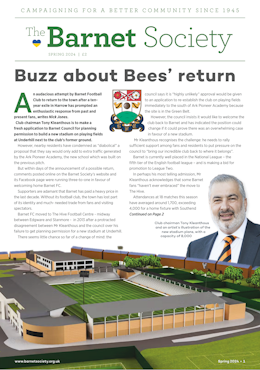The massive pitched roof on the nine-story main building – which was constructed in the shape of a cruciform – can be seen for miles around.
Barratt say they intend to rebuild the main structure in a way that “retains the best of its unique features, while maximising its potential for high quality, sustainable homes.”
The redeveloped building would include commercial space for use as a business hub to host small start-ups and local businesses, and also a café that was open to the public.
Other buildings around the main cruciform structure would be demolished to make way for “attractive clusters” of new homes across the site, together with additional “expansive green spaces” that would open up “panoramic views” across the Totteridge Valley.
As part of the redevelopment there would be new public access to Totteridge Valley, and the aim would be to liaise with local schools to make the best use of fields at the bottom of the site, with perhaps additional sporting facilities for local children.
In his first assessment of the plans – see below – the Barnet Society’s spokesman on planning and the environment, Robin Bishop, says the concept does look “promising” and seems to be in line with the advice of the planners at Barnet Council.
Robin Bishop, says the concept does look “promising” and seems to be in line with the advice of the planners at Barnet Council
Barratt London have begun local consultations on their plans. An exhibition featuring the redevelopment will be held on Saturday 16 April at Mill Hill Library (10.30am-4pm) and on Monday 18 April at the Adam and Eve public house on The Ridgeway (6.30pm-9pm).
The site was sold for redevelopment when the National Institute for Medical Research moved to new premises in central London, and in 2015 Barratt London ran a competition to redevelop the main cruciform building. Julian de Metz, the winning architect, grew up in Mill Hill.
 “We recognise that the main cruciform building is unique, and while local opinion is divided on its architectural quality, it is a local landmark that can be seen for miles around.
“We recognise that the main cruciform building is unique, and while local opinion is divided on its architectural quality, it is a local landmark that can be seen for miles around.
“We propose to rebuild the cruciform in a way that retains its best features while maximising its potential for high quality, sustainable homes, co-working space and a public café with views over the valley.”
As the site is within the green belt and is partly within the Mill Hill conservation area, Barratt London intend to work closely with Barnet Council to “protect and enhance” the local environment.
The Medical Research Council established premises at Mill Hill in the 1920s, but the main cruciform building, designed by Maxwell Ayrton, was not completed until 1949.
“The site has a proud scientific history, with major advances in medicine following the research carried out within the buildings. We want to ensure we remember this legacy and are exploring various options, including naming different areas of the site after NIMR Nobel prize winners.
“We plan to build the scheme using high quality architecture with materials that are respectful of the local context. We are currently running a competition to appoint an artist to help us reflect the site’s history in our designs.”
Robin Bishop, chair of Barnet Society’s planning and environment, gave his reaction to the scheme outlined by Barratt London:
“The National Institute for Medical Research is one of those buildings that is so big and odd that you wonder how it was ever permitted.
The answer is that it was started in 1938, before the greenery it overlooks was protected by planning controls, and Londoners were distracted by the impending 2nd World War. Its weird appearance made it the ideal double for Arkham Asylum in the 2005 film, Batman Begins.
“Barratt London’s approach looks promising, and their concept is in line with the Council's rather good planning brief.
Of course much will depend on how it translates into outline designs, which we won't see until April.
But employing a decent architect and engaging in early consultation is always a good start, and the Barnet Society wishes it was done more often.”


